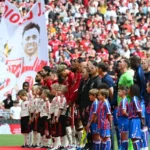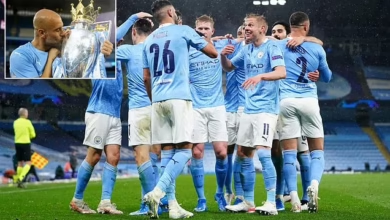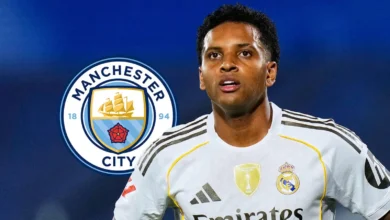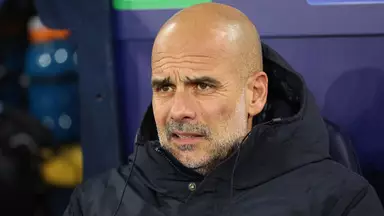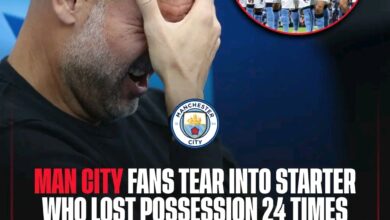Liverpool’s Midfield Conundrum: A Comprehensive Analysis of the Community Shield Defeat
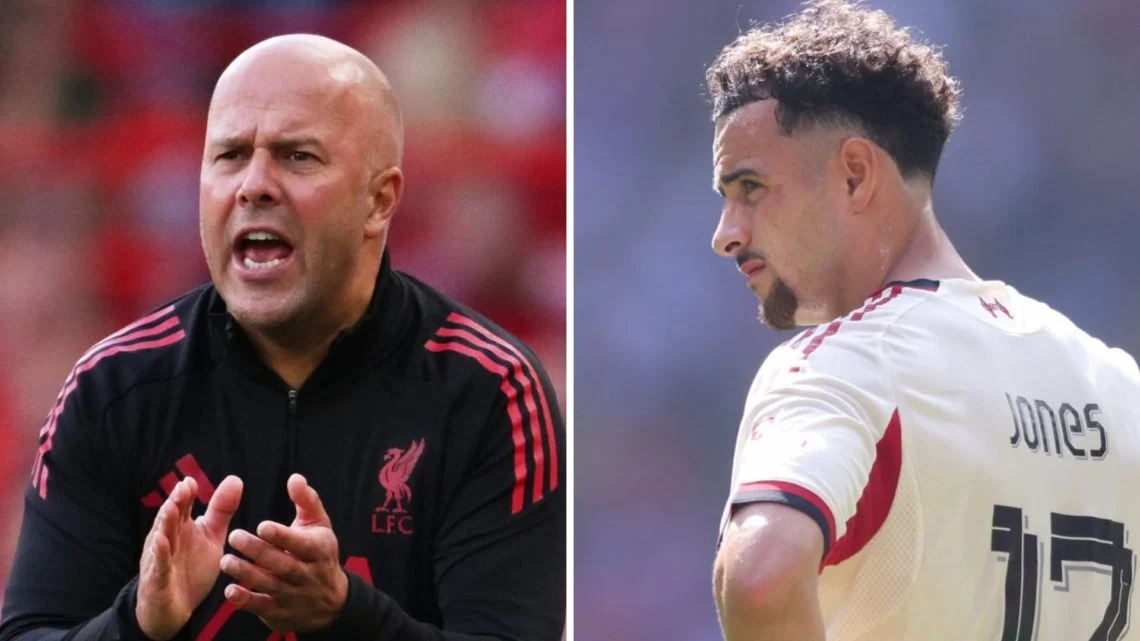
The picturesque setting of Wembley Stadium, traditionally a theater of dreams for English football, became a stage of disappointment for Liverpool Football Club on a sweltering Sunday afternoon. As the Community Shield trophy glinted under the London sun, the Reds found themselves on the wrong end of a penalty shootout against Crystal Palace, a result that would have seemed improbable just months earlier. Yet, beyond the mere statistics of the scoreline lay a deeper, more concerning narrative about Liverpool’s evolving identity under new management and the delicate balance of their midfield architecture.
The defeat, while narrow in margin, exposed fundamental questions about squad depth, tactical flexibility, and individual player development that extend far beyond a single match. At the heart of these concerns lies the performance of two players who were presented with what many considered a golden opportunity to stake their claims for regular first-team football: Curtis Jones and Dominik Szoboszlai.
Liverpool’s transition from the Jurgen Klopp era to the Arne Slot regime has been marked by cautious optimism and careful squad evolution. The Dutch manager inherited a team that had grown accustomed to a particular style of high-intensity football, yet he brought with him tactical nuances that demanded different qualities from his players. The Community Shield represented more than just a traditional curtain-raiser; it was an early examination of how successfully these new ideas could be implemented with the existing personnel.
The absence of Ryan Gravenberch, who had welcomed a new addition to his family just hours before the match, and Alexis Mac Allister, still working his way back to full match fitness following his Copa America exploits with Argentina, created an unexpected opportunity. In the modern game, where squad rotation and tactical flexibility are paramount, such situations often reveal the true depth and quality of a team’s resources.
The midfield trio that Slot has been cultivating throughout pre-season had been disrupted, forcing him to rely on alternatives who had spent much of the summer on the periphery of his plans. This circumstance transformed what should have been a celebratory season opener into a crucial audition for players seeking to establish themselves in the new tactical framework.
Dominik Szoboszlai arrived at Anfield twelve months earlier with considerable fanfare. The Hungarian international had built a reputation as one of European football’s most promising young midfielders during his time at RB Leipzig, displaying a combination of technical ability, creativity, and work rate that seemed perfectly suited to Liverpool’s demanding style of play. His debut season, while showing flashes of brilliance, had been characterized more by adaptation than domination.
The 23-year-old’s journey at Liverpool has been emblematic of the challenges faced by many players transitioning to the Premier League’s unique demands. His undeniable talent – evidenced by moments of genuine class in pre-season friendlies – has been tempered by questions about consistency and tactical discipline. The Community Shield presented him with an opportunity to demonstrate that his impressive pre-season form could translate into meaningful contributions in competitive fixtures.
Unfortunately, Szoboszlai’s performance at Wembley highlighted many of the concerns that have lingered about his adaptation to English football. His passing, typically one of his strongest attributes, lacked the precision and security that such high-stakes matches demand. Several loose balls in dangerous areas invited pressure onto his teammates and disrupted Liverpool’s attempts to establish sustained periods of possession.
More troubling was his inability to establish effective connections with Liverpool’s attacking players. The modern game demands that central midfielders serve as conduits between defense and attack, orchestrating play and creating opportunities for those ahead of them. Szoboszlai’s struggles in this regard left Liverpool’s forward players isolated and starved of quality service, contributing significantly to their overall ineffectiveness in the final third.
The Hungarian’s predicament is particularly acute given the evolution of Liverpool’s midfield under Slot’s guidance. The arrival of Florian Wirtz, another technically gifted player with exceptional creative instincts, has intensified competition for places in the advanced midfield positions. While Szoboszlai possesses different qualities to the German international, his failure to consistently demonstrate his value in his preferred role raises questions about his long-term prospects at the club.
Curtis Jones represents something increasingly rare in modern football: a local product who has progressed through the academy ranks to establish himself as a first-team regular. His journey from the youth teams of his boyhood club to senior football has been marked by moments of genuine quality and an undeniable connection with the Liverpool fanbase. However, his development has been frustratingly inconsistent, with periods of impressive form followed by spells where his limitations become starkly apparent.
The Community Shield offered Jones perhaps his most significant opportunity to demonstrate his evolution as a player. With both Gravenberch and Mac Allister unavailable, he was entrusted with a deeper midfield role that demanded tactical discipline, positional awareness, and the ability to dictate tempo – qualities that had been questioned throughout his career.
While Jones could point to a perfect passing completion rate as evidence of his technical security, such statistics often mask more fundamental deficiencies. His 100% pass accuracy came at the cost of ambition and incisiveness, with many of his contributions being safe, sideways balls that failed to advance Liverpool’s attacking play. More concerning was his passivity in defensive situations, where his reluctance or inability to break up Crystal Palace’s attacking moves allowed the opposition to progress too easily through central areas.
The deeper midfield role requires a specific skill set that extends beyond technical ability. Players in this position must possess exceptional game intelligence, reading dangerous situations before they fully develop and positioning themselves to intercept passes or close down space. Jones’s performance suggested that while he has improved significantly since his breakthrough, he may lack the instinctive understanding of positional play required to excel in such a crucial role.
His struggles were particularly evident during the first half, when Liverpool appeared vulnerable to Palace’s transitions between defense and attack. The space between Liverpool’s defensive and midfield lines became a highway for Palace’s attacking players, with Jones often arriving late to situations or finding himself out of position when his team needed him most.
The pairing of Jones and Szoboszlai in Liverpool’s midfield revealed fundamental tactical incompatibilities that go beyond individual performances. Both players, while possessing different strengths, share certain weaknesses that become amplified when they are deployed together in a system that demands specific qualities.
Neither player possesses the natural defensive instincts required to anchor a midfield effectively. Jones, despite being deployed in a deeper role, lacks the positional discipline and reading of the game necessary to consistently break up opposition attacks. Szoboszlai, while more advanced, failed to provide adequate support in defensive transitions, leaving Jones isolated and overwhelmed when Palace launched their counter-attacks.
The lack of a true defensive midfielder created a domino effect throughout Liverpool’s system. The defense, accustomed to having protection in front of them, found themselves exposed to direct attacks and struggled to maintain their compact shape. This vulnerability was particularly evident during set-piece situations and transitions, where Palace’s pace and directness repeatedly troubled Liverpool’s backline.
From an attacking perspective, the Jones-Szoboszlai partnership failed to provide the creative impetus that Liverpool’s forward players require. Both players operated in similar areas of the pitch without establishing clear roles or responsibilities, leading to confusion and a lack of cohesion in Liverpool’s offensive play. The absence of a player with Mac Allister’s vision and passing range, or Gravenberch’s ability to carry the ball through midfield lines, left Liverpool’s attack disjointed and predictable.
The partnership’s failure was not simply a matter of individual deficiencies but rather a systemic breakdown that highlighted the importance of tactical balance in modern football. Successful midfield combinations require complementary skill sets, with each player compensating for their partner’s weaknesses while maximizing their own strengths. The Jones-Szoboszlai pairing lacked this fundamental balance, creating vulnerabilities that an organized opponent like Crystal Palace was able to exploit effectively.
The relationship between Jones and Szoboszlai has not always been problematic. Their most memorable collaboration came during Liverpool’s impressive victory over Manchester City at the Etihad Stadium, a result that demonstrated their potential when deployed in appropriate roles. However, the circumstances of that success provide important insights into why their Community Shield partnership proved so ineffective.
In the Manchester City victory, both players were utilized in advanced positions with minimal defensive responsibilities. This deployment allowed them to focus on their creative strengths without being burdened by the tactical discipline required in deeper midfield roles. Jones’s ability to drift into dangerous areas and Szoboszlai’s technical skills in tight spaces were maximized, while their defensive limitations were masked by teammates who were better equipped to handle such responsibilities.
The contrast between their success against City and their failure in the Community Shield highlights a crucial principle in modern football: player deployment must align with individual strengths and tactical requirements. Both Jones and Szoboszlai possess qualities that can contribute to Liverpool’s success, but only when they are utilized in roles that maximize their abilities while minimizing their weaknesses.
This historical context suggests that the problem lies not necessarily with the players themselves, but rather with their deployment in a system that demanded qualities neither possesses in sufficient measure. It raises questions about squad balance and whether Liverpool have sufficient depth in the specific roles that their tactical system requires.
Arne Slot’s tactical approach places specific demands on his midfield players that differ significantly from those required under previous regimes. His system emphasizes positional discipline, quick ball circulation, and the ability to press intelligently without leaving dangerous spaces. These requirements demand players with exceptional tactical intelligence and the versatility to adapt their roles based on game situations.
The deeper midfield positions in Slot’s system require players who can serve as both defensive shields and creative initiators. They must possess the tactical awareness to recognize dangerous situations early, the technical ability to play out of pressure, and the vision to switch the point of attack when opportunities arise. These are highly specialized skills that not all technically gifted players possess.
Both Gravenberch and Mac Allister have demonstrated their suitability for these roles through their performances in pre-season and previous competitive matches. Gravenberch’s physical attributes and ball-carrying abilities allow him to excel in both defensive and offensive transitions, while Mac Allister’s exceptional passing range and game intelligence make him invaluable in dictating tempo and creating opportunities.
The arrival of Florian Wirtz adds another dimension to Liverpool’s midfield options, providing creativity and technical excellence in advanced areas. Wirtz’s ability to operate between the lines and combine with Liverpool’s attacking players offers tactical solutions that neither Jones nor Szoboszlai have consistently provided.
This tactical evolution suggests that Liverpool’s midfield hierarchy is becoming increasingly clear. The combination of Gravenberch, Mac Allister, and Wirtz appears to offer the balance and quality that Slot’s system demands, leaving other players to compete for opportunities when rotation is required or circumstances dictate changes.
While much attention has focused on the midfield’s struggles, the Community Shield defeat exposed defensive vulnerabilities that extended beyond individual errors. Jamie Carragher’s halftime analysis highlighted systematic issues that stemmed partly from the lack of midfield protection but also from communication breakdowns and positional uncertainties.
The connection between midfield and defensive performance cannot be overstated in modern football. When midfield players fail to provide adequate screening and fail to win second balls, defensive lines become stretched and vulnerable to quick transitions. Liverpool’s defenders found themselves facing direct attacks with insufficient support, leading to the kind of panicked clearances and desperate challenges that characterize teams under pressure.
The defensive unit’s struggles were compounded by their unfamiliarity with some tactical adjustments that Slot has implemented. The new manager’s approach to defensive pressing and space management requires precise coordination between midfield and defensive players, something that takes time to develop through training and match experience.
These defensive issues serve as a reminder that football is fundamentally a team sport where individual weaknesses can have collective consequences. The midfield’s inability to provide adequate protection and control created problems throughout Liverpool’s system, highlighting the interconnected nature of tactical success
The Community Shield defeat, while disappointing, provides valuable lessons for Liverpool’s development under Slot. The performance of Jones and Szoboszlai, while inadequate on the day, offers important data about squad depth and the specific requirements of different tactical roles.
For Szoboszlai, the challenge is clear: he must demonstrate that his undeniable technical abilities can be channeled into consistent, tactically disciplined performances in competitive matches. His pre-season displays suggest that the talent is there, but he needs to prove that he can maintain those standards when the stakes are highest.
Jones faces perhaps an even greater challenge. As a homegrown player with a natural connection to the club and its supporters, there is an emotional investment in his success that extends beyond mere tactical considerations. However, sentiment cannot override the need for performance, and he must demonstrate that he can evolve his game to meet the demands of elite-level football.
The upcoming fixture against Bournemouth presents another opportunity for both players, particularly given Gravenberch’s continued absence. However, the lesson from Wembley suggests that Slot would be wise to avoid pairing them together again unless tactical circumstances specifically favor their combined skill set.
The Community Shield experience highlights the delicate balance required in modern squad management. While depth is essential for competing across multiple competitions, not all squad players can be expected to seamlessly slot into any role when called upon. The specific demands of different positions and tactical systems require careful consideration when making personnel decisions.
Liverpool’s challenge moving forward is to develop versatile squad players who can contribute effectively across multiple roles while maintaining specialists for key positions. This requires careful planning in both transfer markets and training ground preparation, ensuring that players understand their roles and responsibilities within the broader tactical framework.
The situation also emphasizes the importance of pre-season preparation and tactical familiarity. Players who spend limited time working together during training periods may struggle to develop the understanding and chemistry required for effective partnerships during competitive matches.
The Community Shield defeat serves as a timely reminder that Liverpool face significant challenges in the upcoming Premier League season. The depth of quality in English football has never been greater, with teams throughout the division investing heavily in playing talent and tactical sophistication.
Liverpool’s ability to compete at the highest level will depend not only on their strongest eleven but also on the reliability and effectiveness of their squad players. The Jones-Szoboszlai partnership’s failure suggests that work remains to be done in developing consistent alternatives to the first-choice midfield trio.
The early season fixture list includes challenging matches that will test Liverpool’s depth and tactical flexibility. Success in these games will require all squad members to be ready to contribute effectively when called upon, making the lessons from the Community Shield particularly relevant
The Community Shield defeat to Crystal Palace will be quickly forgotten if Liverpool can demonstrate consistent improvement throughout the season. However, the specific lessons learned from Curtis Jones and Dominik Szoboszlai’s unsuccessful partnership must not be ignored.
Both players possess qualities that can contribute to Liverpool’s success, but their deployment must be carefully considered to maximize their strengths while minimizing tactical vulnerabilities. The evidence suggests that they should not be paired together in central midfield roles, at least not until they demonstrate significant development in the defensive aspects of their games.
For Arne Slot, the challenge is to continue developing his tactical system while managing the expectations and development of players who may not fit perfectly into his preferred approach. The successful integration of all squad members will be crucial for Liverpool’s prospects across all competitions.
The season ahead offers numerous opportunities for redemption and growth. Both Jones and Szoboszlai have shown glimpses of their potential, and with proper guidance and appropriate deployment, they could yet play important roles in Liverpool’s success. However, the Community Shield served as a stark reminder that potential must be converted into consistent performance, particularly in the crucial midfield areas where tactical discipline and game intelligence are paramount.
As Liverpool prepare for their Premier League opener against Bournemouth, the lessons from Wembley provide a foundation for improvement. The challenge now is to ensure that these lessons translate into better performances and more effective squad utilization as the season progresses. The true measure of this experience will not be the disappointment of the defeat, but rather how successfully Liverpool can adapt and evolve based on what they learned during those crucial 90 minutes at Wembley Stadium.



